The most frequent question I’ve been asked over the last couple months, from people attending The ACE conference, fuel marketers, reporters, folks at a farm show, guys I know at EPA, emails, texts, and some weird dude from a nightmare after I took Nyquil, has been “How much will [insert E15 happening] increase ethanol sales?”
The “happenings" referenced were the (hopefully) eventual enactment of year-round E15 nationally, and more recently, the California legislature's actual passage of AB30, authorizing blends up to 15% ethanol to be sold in the Golden State, as an “urgency statute,” meaning retailers could sell E15 immediately upon Governor Newsom's signature (still pending at this writing), rather than waiting for the California Air Resources Board (CARB) to issue its long-overdue approval.
My answer to all the inquiries above (except for the Nyquil guy – which was just a startled groan and rollover) was, “Maybe a lot. But maybe not much…” That’s not just dodging the question — it’s simply the reality. There tends to be chest thumping and sighs of relief after significant policy wins, but although huge growth in ethanol production and use hasn’t happened without these victories, it doesn’t happen simply because the laws or rules change. That’s especially true of E15.
The difference between RFS passage and approval of E15 is the RFS required more ethanol use, E15 merely allowed more. Ethanol sales beat RFS targets early because retailers wanted to get ahead of regulations they knew they’d have to follow; E15 has lagged because they know they don’t have to sell it. We’ve also confused them by saying they can use existing equipment followed by eight years of helping them find funding for the new equipment we said they didn’t need —all while failing to drive home the math on the added volume and profitability E15 could deliver.
At the recent California Fuels + Convenience Alliance (CFCA) Summit, ACE unveiled our new E15 cost calculator on flexfuelforward.com, which tells marketers in all 50 states how much more they could save or earn by offering E15. We also reintroduced our Flex Check compatibility tool retailers can use to discover their existing equipment is probably already compatible with E15. Sixty-three percent of station owners are single store or small chain owners who can’t leave their stores to see us at a trade show or attend a workshop, so our online tools provide 24/7 answers to their most common questions —the same questions from 20 years ago when they added E10: “Will I need new equipment?” and “How much does the fuel cost?” Judging by the 800% increase in web traffic to the E15 calculator and Flex Check after the show and announcement, we’re getting prospective E15 retailers the answers they need.





